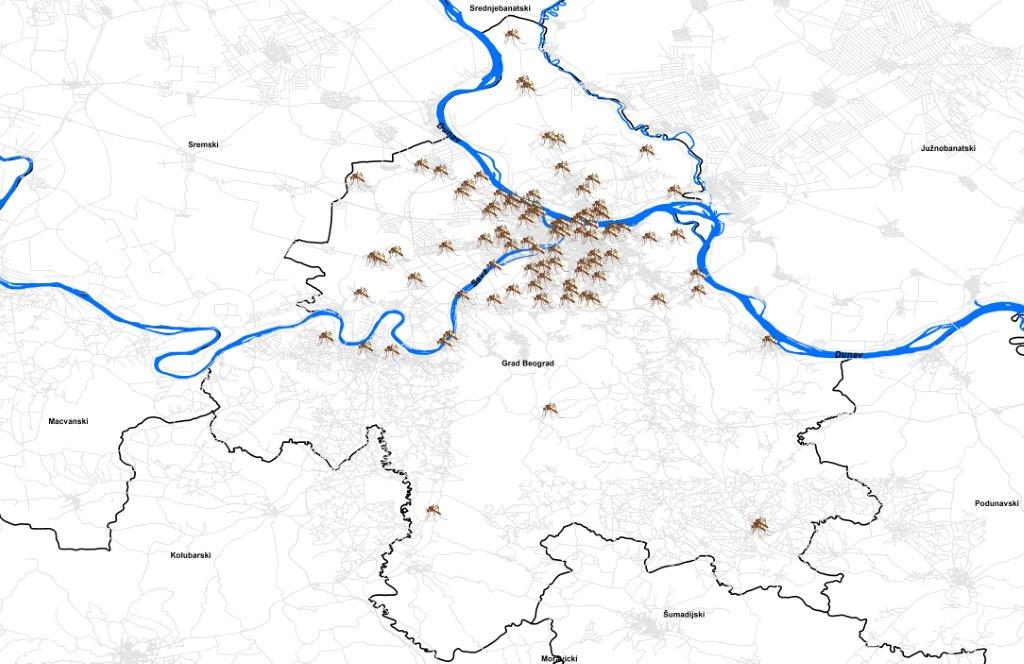Key message: The largest number of infected with the West Nile virus was on the territory of the city of Belgrade
Assessment: Sampling of mosquitoes during the season of their activity is carried out on the whole territory of the City of Belgrade, in about 200 locations. In the last six years, 2013 and 2018 stand out as the years with the greatest number of locations recorded with mosquitoes positive to the presence of the virus. On the territory of Belgrade, there were 48% in 2013, and in 2018, 52% locations with mosquitoes positive to the presence of the virus. As for the other years, the number of positive locations in Belgrade varied widely, from 6% in 2016 to 29% in 2015. The number of mosquitoes at locations in Belgrade varied from season to season, but the number of mosquitoes is not correlated with their infectiousness with the Western Nile virus (it is possible that the virus is present in many locations and in low numbers of mosquitoes). The Institute for Biocides and Medical Ecology has conducted mosquito control in the territory of 16 Belgrade municipalities (except Obrenovac) in cooperation with the Secretariat for Environmental Protection of Belgrade as part of its regular activities, as well as on epidemiological indications (i.e. registration of infected people in Belgrade municipalities).
Based on data provided to the Institute for Public Health of Serbia “Dr. Milan Jovanović Batut” (in accordance with the Recommendations for the control of Western Nile fever in the human population in the seasons 2013, 2016, 2017 and 2018 of the Institute of Public Health of Serbia), laboratory criteria (according to the recommendations of the European Centre for Disease Prevention and Control), 415 cases of Western Nile fever were registered on the territory of the Republic of Serbia, with 36 deaths that can be associated with fever from the Western Nile (Institute Batut report for 2018: http://www.batut.org.rs/index.php?content=1742), 49 (45 confirmed and four probable) cases of fever from the Western Nile with two deaths (Institute Batut for 2017: http://www.batut.org.rs/index.php?content=1577), 41 confirmed cases of fever from the Western Nile, including two deaths, a patient aged 81 from the South Banat district and 74 year-old from the territory of the City of Belgrade, which can be linked to fever from the Western Nile fever.
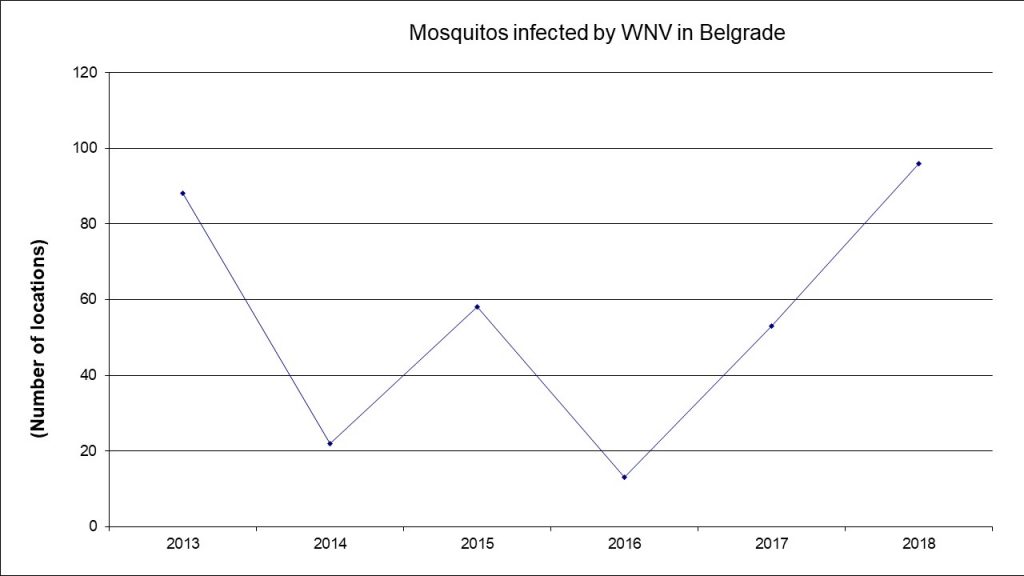
Indicator Name: Trend of mosquito populations infected with WNV in Belgrade
Institution/Author: Institute for Biocides and Medical Ecology /dr Ivan Aleksić, Environmental Protection Agency/Slaviša Popović
Use and interpretation:
Key question(s) which indicator helps to answer: What is the number of infected mosquitoes in Belgrade? What is the trend of area of infected mosquitoes in Belgrade?
Use of indicator to control population growth of mosquito infected with WNV in Belgrade
Scale of appropriate use urban, suburban areas
Potential for aggregation:
Meaning of upward or downward trends: Sampling of mosquitoes during the season of their activity is carried out on the whole territory of the City of Belgrade on about 200 locations. In the last six years, 2013 and 2018 stand out as the years with the greatest number of locations recorded with mosquitoes positive for the presence of the virus. On the territory of Belgrade in 2013, 48 % and in 2018, 52 % of locations with mosquitoes were positive for the presence of the virus. In the rest of the years, the number of positive locations in Belgrade varied widely, from 6 % in 2016 to 29 % in 2015.
Possible reasons for upward or downward trends: The number of mosquitoes at locations in Belgrade varied from season to season, but the number of mosquitoes is not correlated with their infectiousness with the western Nile virus (it is possible that the virus is present in many locations and in low numbers of mosquitoes). The Institute for Biocides and Medical Ecology has conducted mosquito control in the territory of 16 Belgrade municipalities (except Obrenovac) in cooperation with the Secretariat for the Protection of the Environment of Belgrade as part of its regular activities as well as on epidemiological indications (i.e. registration of diseased people in Belgrade municipalities).
Implications for biodiversity management of change in the indicator: Based on the data provided to the Institute for Public Health of Serbia “Dr Milan Jovanović Batut” (in accordance with the Recommendations for the control of Western Nile fever in the human population in the seasons 2013, 2016, 2017 and 2018 of the Institute of Public Health of Serbia); Laboratory criteria (according to the recommendations of the European Centre for Disease Prevention and Control), 415 cases of Western Nile fever have been registered on the territory of the Republic of Serbia, with 36 deaths that can be associated with fever from the Western Nile (Institute Batut report for 2018: http://www.batut.org.rs/index.php?content=1742 ), 49 (45 confirmed and four probable) cases of fever from the Western Nile with two deaths (Institute Batut for 2017: http://www.batut.org.rs/index.php?content=1577), 41 confirmed case of fever from the Western Nile, including two deaths, a patient aged 81 years from the South Banat district and 74 year old from the territory of the City of Belgrade, which can be linked to fever from the Western Nile fever.
Units in which it is expressed: ha
Description of source data: Institute for Public Health of Serbia “Dr Milan Jovanović Batut”
Calculation procedure: Based on the data provided to the Institute for Public Health of Serbia “Dr Milan Jovanović Batut”(in accordance with the Recommendations for the control of Western Nile fever in the human population in the seasons 2013, 2016, 2017 and 2018 of the Institute of Public Health of Serbia); Laboratory criteria (according to the recommendations of the European Centre for Disease Prevention and Control).
Most effective forms of presentation:
Map and graphs
Limits to usefulness and accuracy:
Updating the indicator: Annually
Closely related indicators: Trend of the mosquito population infected with Western Nile virus in Serbia

Map 1: Trend of the mosquito population infected with Western Nile virus in Belgrade 2013
Map 2: Trend of the mosquito population infected with Western Nile virus in Belgrade 2014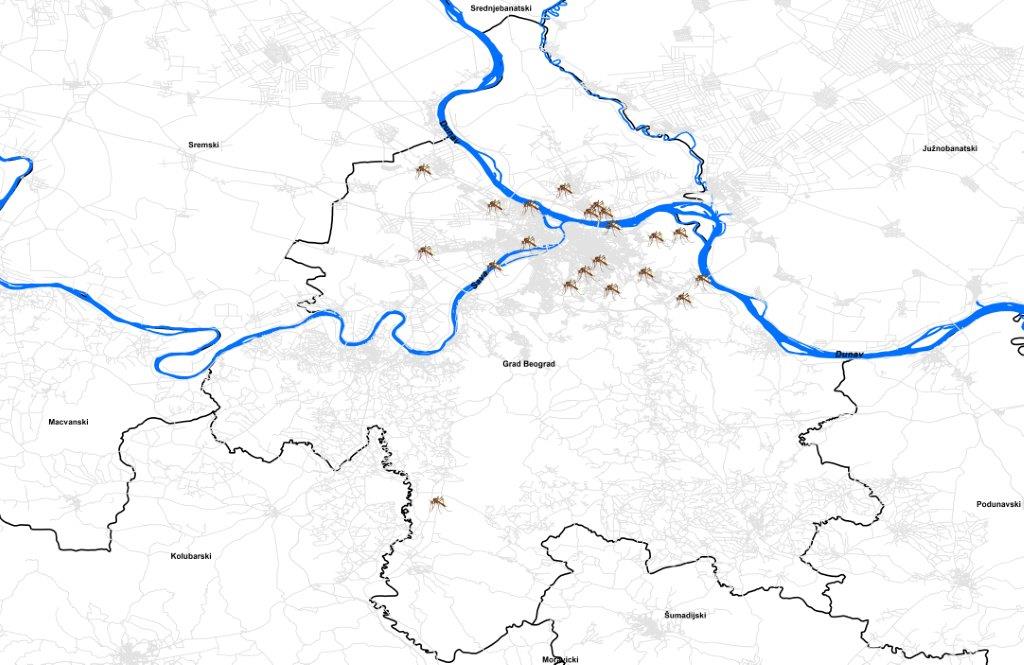
Map 3: Trend of the mosquito population infected with Western Nile virus in Belgrade 2015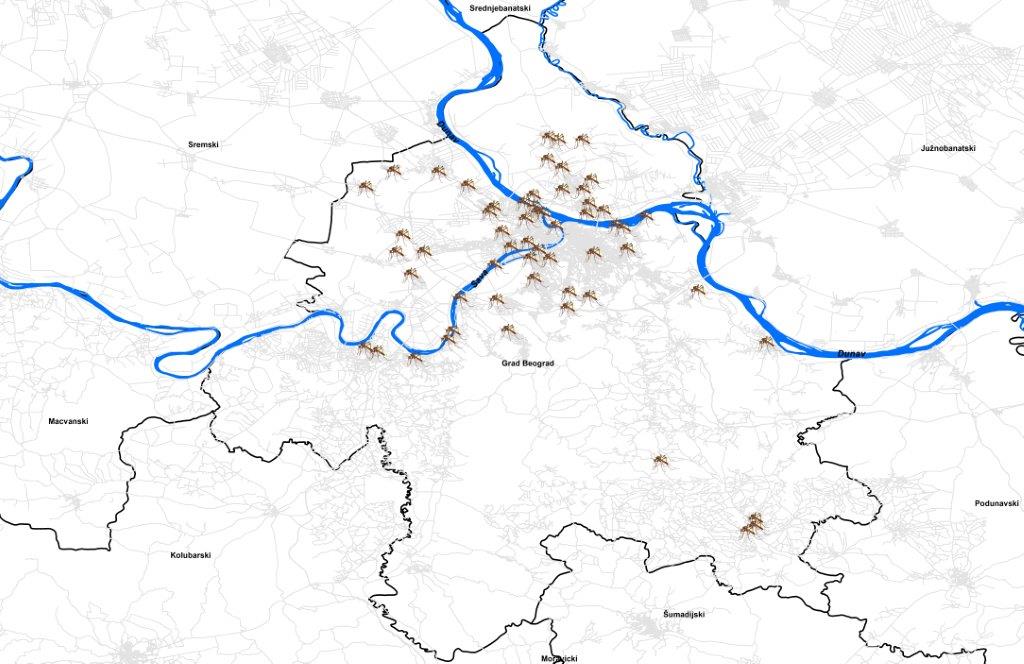
Map 4: Trend of the mosquito population infected with Western Nile virus in Belgrade 2016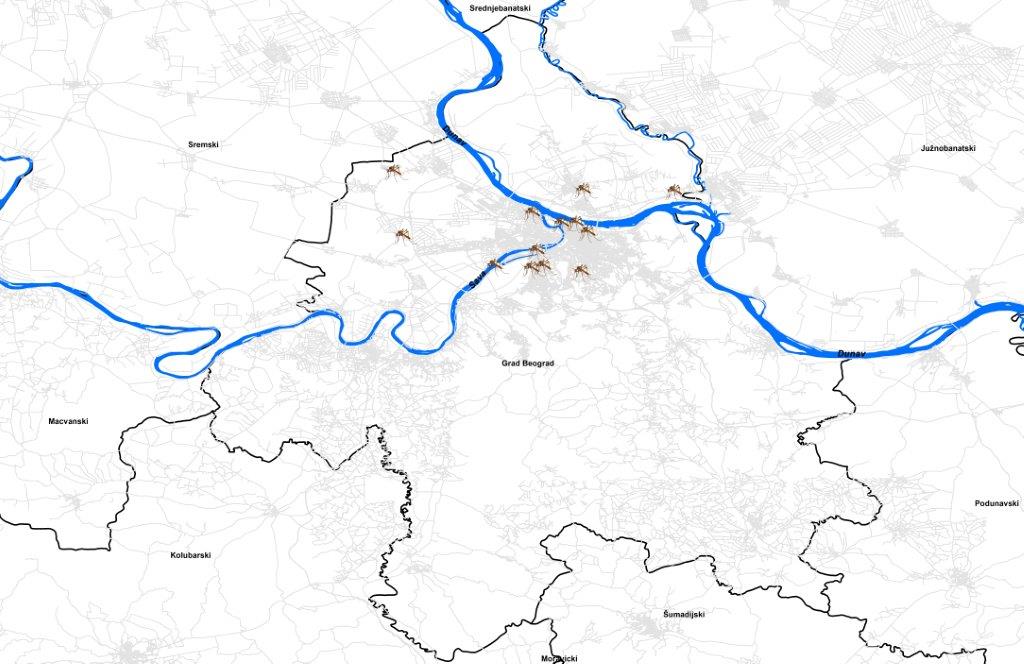
Map 5: Trend of the mosquito population infected with Western Nile virus in Belgrade 2017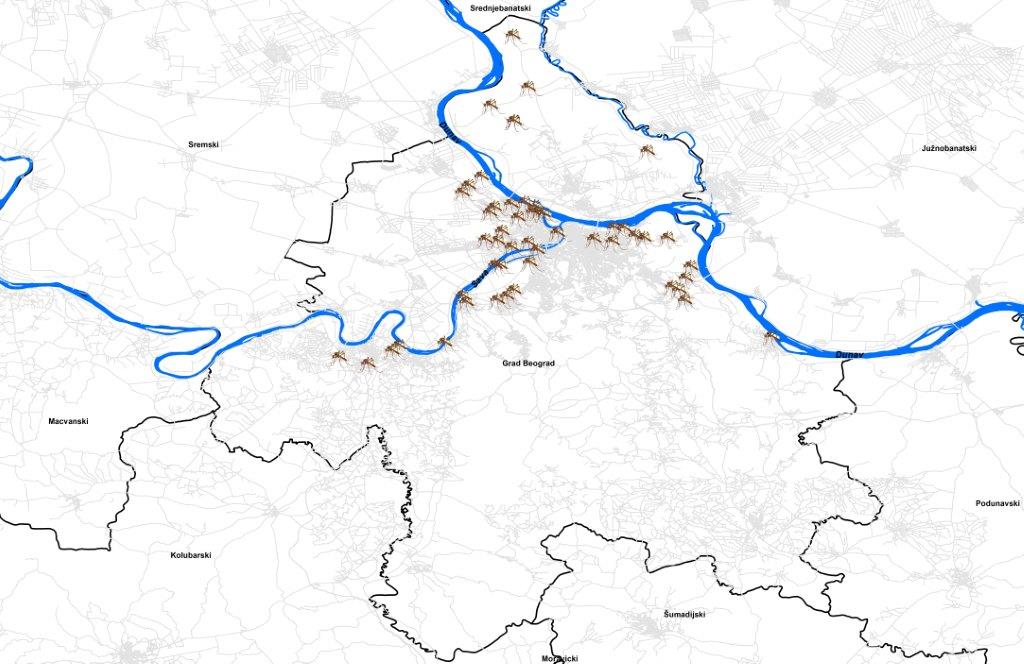
Map 6: Trend of the mosquito population infected with Western Nile virus in Belgrade 2018